
Publisher:
Bonnie King
CONTACT:
Newsroom@Salem-news.com
Advertising:
Adsales@Salem-news.com

~Truth~
~Justice~
~Peace~
TJP
Dec-23-2013 02:17

 TweetFollow @OregonNews
TweetFollow @OregonNews
Myanmar's Religious Segregation and Apartheid Policy Against Minority Muslims
Nurul Islam for Salem-News.comIn 2012, two eruptions of violence between Rohingyas and majority Buddhists in Rakhine State in western Myanmar killed at least 192 people and made 140,000 homeless.
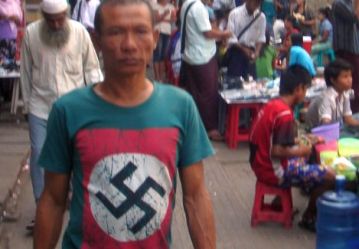 Rakhine Buddhists intent on eliminating Muslims are actually wearing the swastika in public |
(DHAKA, Bangladesh) - The Rohingya Muslim population is mostly concentrated in the three northern townships: Maungdaw, Buthidaung and Rathedaung. The Rohingyas speak a Bengali dialect. They suffer from several forms of restrictions and human rights violations. The vast majority of them have effectively been denied Myanmar citizenship. The word ‘Rohingya’, it is claimed, was first suggested by Abdul Gaffar, an MP from Buthidaung, in his article ‘The Sudeten Muslims".
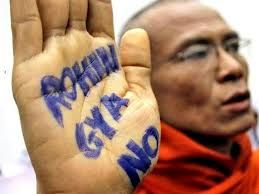 Buddhist displays message of hate |
In 1978 the Burmese junta created a situation for the Arakanese Muslims that forced them leave their country for safety elsewhere. According to Amnesty International, in 1978 over 200,000 Rohingyas fled to Bangladesh, following the Burmese army’s Operation Nagamin. ‘According to the 1983 census Muslims in Arakan constituted 24.3 percent and they were categorized as Bangladeshi. The SPDC rejects the existence of a separate ethnic group called “Rohingya”.
Moreover they are not recognized as one of the 135 ‘national races’ by the Myanmar government. Rohingyas have experienced discrimination, ethnic cleansing and marginalization since 1962. In 2012, two eruptions of violence between Rohingyas and majority Buddhists in Rakhine State in western Myanmar killed at least 192 people and made 140,000 homeless. As Impact of the communal violence the sufferers (Rohingya Muslims ) have fled Burma by sea in unprecedented numbers over the past year.
Historical background of Rohingya Muslims of Rakhine state
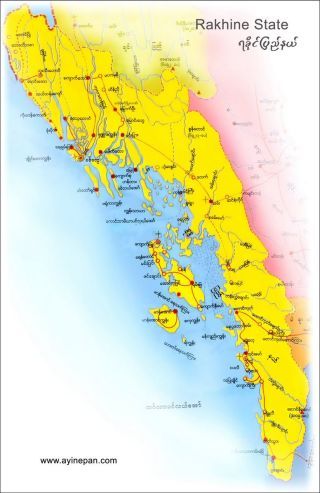
The Rakhine State (historically known as Arakan), is one of seven ethnic minority states which were formed under the constitution of 1974. The Rohingya Muslim population is mostly concentrated in the three northern townships: Maungdaw, Buthidaung and Rathedaung.
The Rohingyas speak a Bengali dialect similar to what is spoken in the Chittagong region of Bangladesh, mixed primarily with words from the Urdu, Hindi and Arabic languages, but also from the Bama and English languages. The first Muslims who settled in this region were believed to be Arab mariners and traders that arrived on the Rakhine coast in the 8th and 9th centuries. Other Muslims who came to the area in later centuries include Persians, Moghuls, Turks, Pathans and Bengalis. During the British colonial period from 1824 until 1948 there was also migration from Chittagong to what is now the Rakhine State.
The Muslim ethnic minority, generally known as the Rohingyas, who live in northern. Rakhine State , western Myanmar , continue to suffer from several forms of restrictions and human rights violations. The Rohingyas’ freedom of movement is severely restricted and the vast majority of them have effectively been denied Myanmar citizenship. They are also subjected to various forms of extortion and arbitrary taxation; land confiscation; forced eviction and house destruction; and financial restrictions on marriage. Rohingyas continue to be used as forced labourers on roads and at military camps.Rohingyas are victims of religious and racial discrimination.
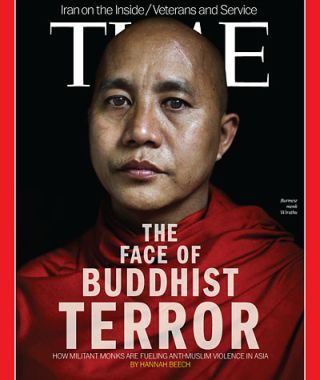 Recent European and Asia |
The Arakanese Buddhists, the Rakhines, were first known as Magh. Later when the Rakhines became more educated and politically conscious they changed their identity from Magh to Rakhine. In the early period, Arakanese Muslims were also less educated and politically not so conscious. They first called themselves "Rohangi". But after the 16th century when they become politically conscious they adopted "Rohingya" as their ethnic identity. In June 1951 All-Arakan Muslim Conference was held in village Alethangyaw, and ‘The Charter of the Constitutional Demands of the Arakani Muslims’ was published. It called for ‘the balance of power between the Muslims and the Maghs (Arakanese), two major races of Arakan.’
The demand of the charter read: North Arakan should be immediately formed a free Muslim State as equal constituent Member of the Union of Burma like the Shan State, the Karenni State, the Chin Hills, and the Kachin Zone with its own Militia, Police and Security Forces under the General Command of the Union (Department of the Defense Service Archives, Rangoon: DR 1016/10/13).It is noteworthy that in the charter these peoples are mentioned as the Muslims of Arakan and not Rohingyas.
The word ‘Rohingya’, it is claimed, was first suggested by Abdul Gaffar, an MP from Buthidaung, in his article ‘The Sudeten Muslims’, Myanmar’s successive military regimes persisted in a policy of denying citizenship to the Rohingya Muslims, especially in the frontier area. They stubbornly grasped the 1982 Citizenship Law that allowed only the ethnic groups who had lived in Burma before the First Anglo-Burmese War that began in 1824 as the citizens of the country. By this law those Muslims had been treated as aliens in the land they have inhabited for more than a century. In 1978 the Burmese junta created a situation for the Arakanese Muslims that forced them to leave their country for safety elsewhere.
According to Amnesty International, in 1978 over 200,000 Rohingyas fled to Bangladesh, following the Burmese army’s Operation Nagamin. Most – it is claimed by Yangon – were eventually repatriated, but around 15,000 refused to return. In 1991, a second wave of about a quarter of a million Rohingyas fled Myanmar to Bangladesh.
‘According to the 1983 census Muslims in Arakan constituted 24.3 percent and they were categorized as Bangladeshi, while the Arakanese Buddhists formed 67.8 percent of the population of the Arakan (Rakhine) State’ (Immigration and Manpower Department 1987:I-14).Under the pretext of scrutinizing so-called illegal immigrants, the regime has already killed, drowned and driven hundreds and thousands of Rohingya over the decades, which are well documented rousing international condemnations calling for actions.
An estimated one million Rohingyas are now living in Rakahine state and 1.5 million of Rohingya population are in Diaspora particularly in Bangladesh , India , Pakistan , Saudi Arabia , UAE, Thailand and Malaysia . The Rohingya are a people characterized by objective criteria, such as historical continuity, and subjective factors including self-identification, which need to define an indigenous people. They are a people having supporting history, separate culture, civilization, language and literature, historically settled territory and reasonable size of population and area in Arakan – they consider themselves distinct from other sector of the society.
The SPDC rejects the existence of a separate ethnic group called “Rohingya”. Moreover they are not recognized as one of the 135 ‘national races’ by the Myanmar government: As a member of the United Nations, Myanmar is also legally obliged to take action to promote “universal respect for, and observance of, human rights and fundamental freedoms for all without distinction as to race, sex, language, or religion. But the Rohingya are not considered to be a national ethnic group as provided by sec. 3 of the 1982 law. They are being deprived from obtaining higher studies and government’s services.
Practice in relation to family lists
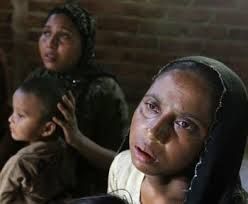
A family list is crucial to the Rohingya’s ability to prove residency. Many of the Rohingyas whose testimonies were made available to Amnesty International complained that people have been dropped from the family list if they were not present during a population check by the local authorities. Where someone is not present for such a count and their absence is not covered by a travel permit, in many instances the authorities have deleted people from the family list.
Restriction of movement
Rohingyas in northern Rakhine State must apply for permission to go to another nearby village. This practice does not apply to the Rakhine population in the Rakhine State. Rohingyas’ freedom of movement, therefore, is considerably more limited than that of other residents of the Rakhine State. This has had serious repercussions on their livelihood and food security, as they are often unable to seek employment outside their village or trade goods and produce unless they have official permission and obtain a pass which they must pay for. Most Rohingyas cannot afford to pay for these permits.
Forced labour
The security forces continue to take civilians for forced labour duties in Myanmar, especially in ethnic minority states. Extensive forced labour in particular, and other human rights violations, were the main reasons for the 1991-92 exodus of Rohingyas to Bangladesh. Forced labour, whether paid or unpaid, is in contravention of International Labour Organization (ILO) Convention concerning Forced or Compulsory Labour (No. 29) which the Myanmar Government acceded to in 1955.
Model Villages
The SPDC (Now Myanmar Quasi civilian govt) policy of relocating Rakhine,other non-Rohingyas to especially established “model villages” in Northern Rakhine State has resulted in the confiscation of land from the Rohingya population. Before 1992 several model villages were built in Rakhine State, mainly in Maungdaw and Buthidaung townships. After the formation of the NaSaKa in 1992, the building of model villages reportedly intensified.
The majority of the population of model villages are poor Rakhine people from other parts of Rakhine State. Others include poor Bama from the central plains; retired civil servants; former prisoners; former insurgents (Communist Party of Burma and Rakhine armed groups); and ethnic minorities such as the Kamein, Daingnet, Mro and Thet, who live in the highlands near the border with Bangladesh and Chin State. There are 26 model villages in Buthidaung and Maungdaw townships. The policy of building of model villages has presented several problems for the Rohingya population.
The confiscation of land from Rohingyas to build model villages deprives them of opportunities to sustain their livelihood, as these are in almost all cases grazing grounds for their cattle, rice fields or shrimp farms. Furthermore, the Rohingya population of nearby villages are often forced to build the houses and other facilities of the model villages without pay. In some cases they also had to provide some of the building materials. All of these factors have greatly contributed to increasing poverty and food insecurity for the Rohingya population. SPDC`s policy is to increase Buddhists in the Rohingya populated areas and marginalized them.
Registration of births, deaths and arbitrary taxation in Rohingya families
All households of only Muslim(Rohingya)families are obliged to report any changes to the family list to the authorities. For the registration of births and deaths in Rohingya families are forced to pay fees from 1,000 to 8,000 kyat to the NaSaKa (now Lun Htin). The sale of cattle must also be registered and paid for. The security forces arrest Rohingyas without any proper allegation and beat until getting money because they know that if they beat the money would come faster.
Marriage Permission for only Rohingyas
Since the creation of NaSaKa in 1992, the authorities in Northern Arakan have reportedly introduced a regulation that the Rohingya population in Northern Arakan are required to ask for permission to get married. This restriction appears to be only enforced on the Muslim population in this area, and not on the Buddhist Rakhine population. In general, Rohingya couples must pay a substantial amount of money to the NaSaKa (Now Lun Htin), varying from 50,000 to 300,000 kyat.
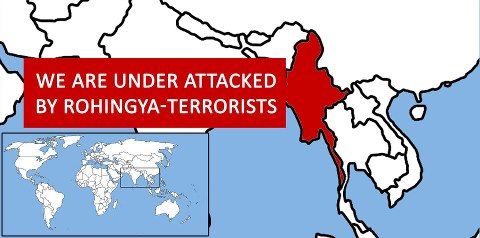 As the Rakhine Buddhists commit Genocide against Rohingyas, some publish |
After payment, permission is not always given. This restriction especially affects poor people, who are unable to obtain such large amounts of money for why reportedly so far considerable numbers of couples crossed to Bangladesh for the purpose of marriage. Recently Myanmar quasi civilian govt introduced two child birth policy for only Rohingya Muslim couple. Imposing restriction on marriage and two child birth policy is just to stop increasing of Muslim population in Arakan.
‘In the 1988 Democracy movement Muslims raised the Rohingya issue. Subsequently when the military junta allowed the registration of the political parties they asked for their parties to be recognized under the name “Rohingya.” Their demand was turned down and so they formed the National Democratic Party for Human rights (NDPHR) that won in four constituencies in 1990 elections – eleven candidates of the Arakan League for Democracy (ALD) were elected to the legislature. However, the Elections Commission abolished both the ALD and the NDPHR in 1991. Some of the party members had to go into exile.’
Tens of thousands of stateless Muslim Rohingya women and girls who fled persecution in Myanmar for safety in Bangladesh are facing abuse and sexual violence at the hands of Bangladeshis and members of their own refugee communities with little chance of redress, a human rights group said in its latest report.
Lacking documentation and not recognized as refugees by the Bangladeshi government, they are routinely attacked, raped and threatened by locals when they collect water and firewood or even go to the latrines, according to Bangladesh: The Silent Crisis by Refugees International (RI).
The Communal riot-2012 and its impact
Rohingyas have experienced discrimination, ethnic cleansing and marginalization since 1962. Racism and marginalization is like a cancer that has been eating away the Rohingya community slowly since 1962. People have been leaving the country and faced systematic discrimination. In June of 2012, things exploded and once the news got out via international and social media. Rohingya are Muslims from Burma, where they are usually stateless and despised as illegal immigrants.
In 2012, two eruptions of violence between Rohingyas and majority Buddhists in Rakhine State in western Myanmar killed at least 192 people and made 140,000 homeless. Most were Rohingya, who live in wretched camps or under apartheid-like segregation with little access to healthcare, schools or jobs. Govt`s security forces were directly (or) indirectly involved in the communal violence. As Impact of the communal violence the sufferers (Rohingya Muslims ) have fled Burma by sea in unprecedented numbers over the past year. Ismail and Mohamed joined tens of thousands of Rohingya in one of the biggest movements of boat people since the end of the Vietnam War.
Widespread bias against the Rohingya in the region, however, makes it difficult for them to find safe haven—and easy to fall into the hands of traffickers. “No one is there to speak for them,” says Phil Robertson, deputy director for Asia at Human Rights Watch. “They are a lost people.”Rohingya men, women and children squeeze aboard overloaded fishing boats and cargo ships to cross the Bay of Bengal. Their desired destination is Malaysia, a Muslim-majority country where at least 31,000 Rohingya already live. As Reuters reported in July,2013 many of these refugees were waylaid in Thailand, where the Thai navy and marine police worked with smugglers to extract money for their onward trip to Malaysia.
Comment and Recommendations;
The UNHCR spokesman in Asia, Kitty Mckinsey says: ‘No country has really taken up their(Rohingya) cause. Look at the Palestinians, for example, they have a lot of countries on their side. The Rohingyas do not have any friends in the world.’Obviously, an immediate and sympathetic solution is needed; otherwise, it can plunge Rohingyas into deeper suffering, cause resistance amongst host societies, and fail at stemming the onward movement of Rohingyas into the region.
It is terrible that State Peace and Development Council (SPDC) started making false and concocted propaganda against the Rohingya people’s ‘right to exist’ in Arakan, a clear sign of ‘ethnic cleansing’. The regime is pretending not to hear the Rohingya’s outcry and international reactions to stop systematic persecution of this ethnic Muslim community. As appeared in the “New Light of Myanmar” dated 30 January, 2009 the SPDC has admitted to have launched series of operations over the decades against the Rohingyas under the pretext “to scrutinize the Bengali immigrants illegally immigrated into Rakhine region of Myanmar”. SPDC`s intention is to exterminate Rohingyas from Arakan.Now, the current Quasi Civilian govt is stepping same directions of SPDC because the SPDC is now working as Quasi Civilian govt only changing name of body.But their inner intention and the heinous policy is unchanged.
Soon after the occurring of communal strife in Rakhine state, president Thein Sein urged world to take Rohingyas to their countries and settle there. So, here it is crystal clear that the Myanmar govt involved in communal riot in Arakan, as well as in attack on Bama Muslims of central Myanmar. In Myanmar country wide Census-2014 is knocking the door. It is learnt that UN is sponsoring the census. But Rohingyas are in severe tension and concerned in this regards because it is still not clear that Muslims from Rakhine state will be recorded as "Rohingya" in the census.
They will never accept the name "Bengali".
They wanted Rohingya students/ teachers to be included in census team in Arakan. Hope UN and world communities will pressurize Myanmar to ensure Rohingya`s demand and make happen it. Also UN and world communities should take measures to persuade Myanmar to retreat restriction on Rohingya movement within the country in order to stop fleeing/exodus of Rohingyas from Arakan.
Sources:-
1. Reports of Amnesty International-2004,
2. Burma`s missing Dots-2010 by Dr. Abid Bahar,
3. The Plight of Stateless Rohingyas by Prof. Imtias Ahmed,
4. Human Rights abuses and Discrimination on Rohingyas-2003 by Zaw Min Htut,
5. Souvenir-1999, Arakan Historical Society,
6. The Rohingyas By Dr. Abdul Karim,Chittagong University,
7. Irrawaddy News,
8. RFA News
 |
 |
 |
Articles for December 22, 2013 | Articles for December 23, 2013 | Articles for December 24, 2013

Quick Links
DINING
Willamette UniversityGoudy Commons Cafe
Dine on the Queen
Willamette Queen Sternwheeler
MUST SEE SALEM
Oregon Capitol ToursCapitol History Gateway
Willamette River Ride
Willamette Queen Sternwheeler
Historic Home Tours:
Deepwood Museum
The Bush House
Gaiety Hollow Garden
AUCTIONS - APPRAISALS
Auction Masters & AppraisalsCONSTRUCTION SERVICES
Roofing and ContractingSheridan, Ore.
ONLINE SHOPPING
Special Occasion DressesAdvertise with Salem-News
Contact:AdSales@Salem-News.com

Salem-News.com:
googlec507860f6901db00.html

Terms of Service | Privacy Policy
All comments and messages are approved by people and self promotional links or unacceptable comments are denied.
Tim September 5, 2016 9:03 pm (Pacific time)
Adolf Hitler admired the doctrines of Islam and wished the Europe had adopted Islam instead of Christianity. The guy has a swatstika on his shirt either because he understands it primarily as a symbol of Buddhism, or he understands it as a symbol of nationalism, which was not demonized outside the West and has a very positive connotation of patriotism in SE Asia. You can see this in Thai boy bands who dress up in Nazi uniforms for music videos. The vast majority of the Muslims migrated there illegally in the 20th century, and surprise surprise a conflict arises just like everywhere else where Muslim land borders non-Muslim land. Ever considered that the ideology that sees all outsiders as kuffir might be the problem? Nothing could possibly be worse for social cohesion, and it shows.
Jun June 28, 2015 8:51 am (Pacific time)
A swastika is very common in ASIA. It is a symbol of peace in buddhist culture. Pathetic.
dragon December 23, 2013 8:29 pm (Pacific time)
the above story is full of wrong fact
[Return to Top]©2025 Salem-News.com. All opinions expressed in this article are those of the author and do not necessarily reflect those of Salem-News.com.